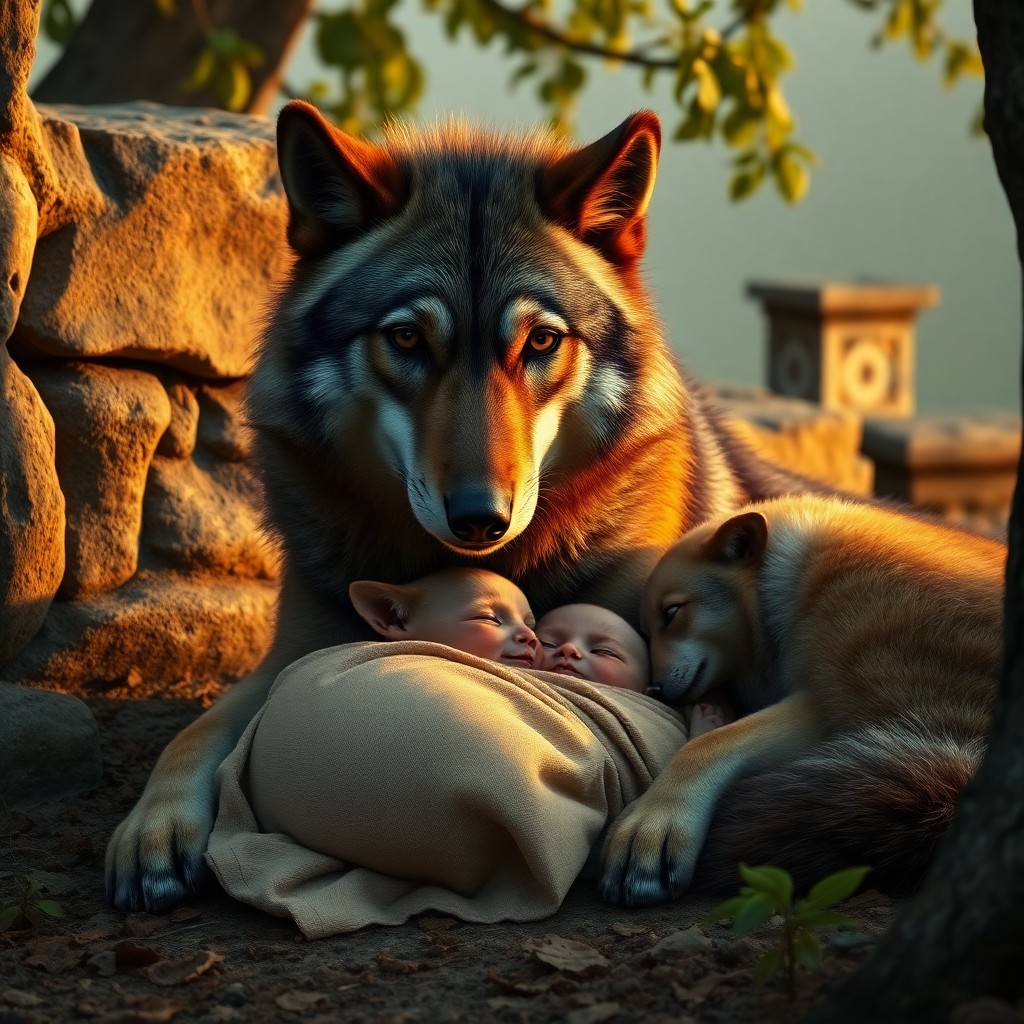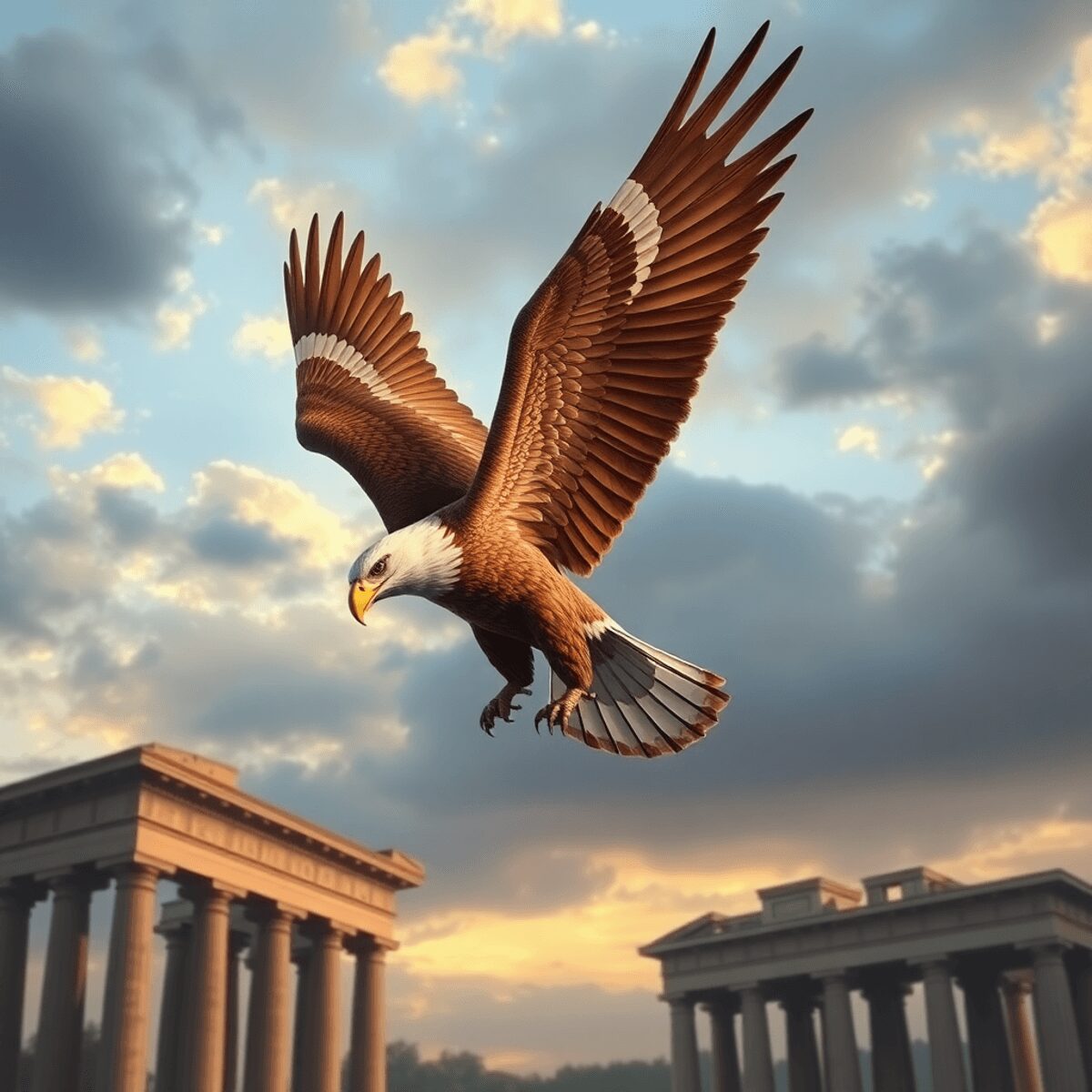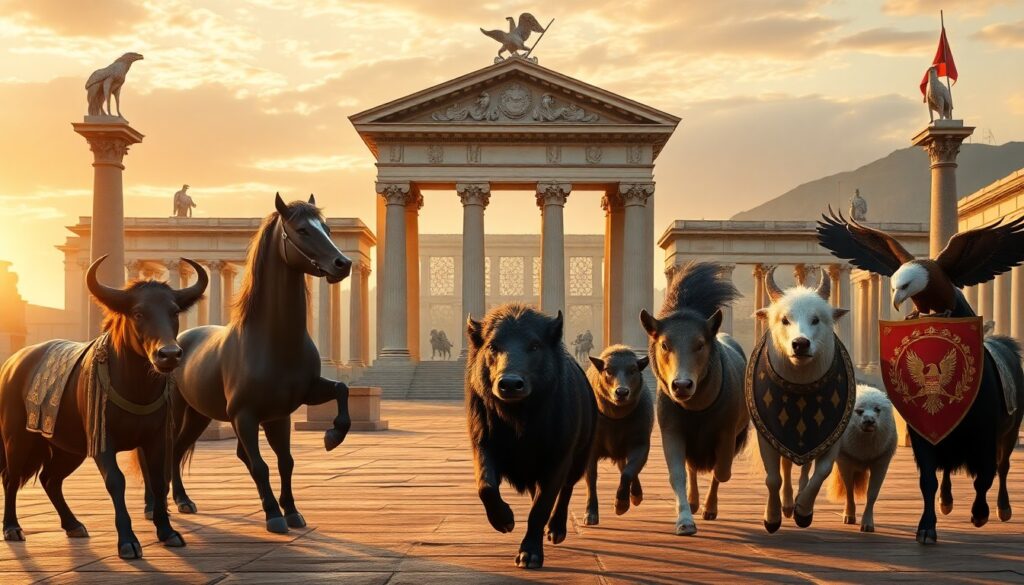Roman mythology is full of animal symbolism, showing how deeply connected the culture was to nature, gods, and societal values. Animals often represented important ideas like divine favor, military power, and cultural identity. Among these symbols, the wolf and eagle are particularly significant—representing Rome’s founding story and Jupiter’s divine authority respectively.
This article explores Animal Symbolism in Roman Mythology Beyond Wolves and Eagles, focusing on lesser-known creatures that held great significance. By examining these animals, we can gain a deeper understanding of the complexity of Roman mythology and the various roles animals played—not only as mythic figures but also as reflections of Roman religious practices, military traditions, and regional identities.
We will uncover how bulls, horses, boars, and other animals symbolized qualities such as strength, bravery, and protection. This exploration unveils a wider symbolic landscape that influenced Roman cultural expression beyond the well-known stories of wolves and eagles.
Prominent Animals in Roman Mythology: Wolves and Eagles
The wolf holds a central role in Roman mythology through the tale of Romulus and Remus. According to legend, these twin brothers, the founders of Rome, were abandoned as infants and suckled by a she-wolf. This nurturing act symbolized the protective nature of the wolf and its association with the city’s origins.
On the other hand, the eagle, known as Aquila in Latin, played a crucial role as a military standard and divine emblem in Roman culture. Associated with Jupiter, the king of gods, the eagle represented strength, immortality, and divine protection. It was prominently displayed by Roman legions as a sacred symbol carried by an aquilifer, an officer responsible for safeguarding this revered standard.
These two iconic animals, the wolf and the eagle, set the stage for exploring a myriad of other animal symbols within Roman mythology. While wolves are intertwined with Rome’s founding narrative and eagles signify military might and divine favor, delving into lesser-known animal symbols reveals a rich tapestry of meanings embedded within Roman culture and history.

Other Animal Symbols in Roman Military Contexts
Roman military symbolism extended well beyond the famed wolves and eagles, incorporating a variety of animals that conveyed distinct qualities crucial to warfare and command.
1. Bulls
Bulls represented strength and endurance on the battlefield. Their muscular build and raw power made them ideal emblems for legions emphasizing resilience and unyielding force. Bulls often appeared on military standards, signaling the might of the unit they represented. The association with fertility and vigor also added layers of meaning, suggesting an army’s capacity to sustain itself and prevail through persistence.
2. Oxen with Human Heads
These hybrid creatures are more enigmatic but carry significant mythological weight. Oxen combined with human heads or faces likely symbolized divine power or supernatural guardianship. Such figures appear in Roman art and military insignia, reflecting a fusion of animal strength with human intelligence or spiritual authority. This blend suggested forces beyond mere physical might—forces guided by higher wisdom or sacred protection.
3. Horses
Horses were indispensable in warfare for their speed and mobility. Beyond their practical role in cavalry units and transport, horses symbolized nobility and swift action. Roman commanders prized horses as markers of status and strategic advantage, often featuring them prominently on standards or personal shields. Their presence evoked agility, courage, and the ability to maneuver quickly—qualities vital to successful campaigns.
4. Boars
The boar embodied bravery and aggressive defense. Known for their fierce temperament when cornered, boars served as apt symbols for soldiers willing to fight tenaciously against overwhelming odds. Boar images adorned shields and standards to inspire troops with the idea of relentless courage. Their symbolism underscored a warrior’s readiness to confront danger head-on without retreat.
Each animal brought a unique dimension to Roman military iconography, reinforcing ideals that shaped legion identity and morale. These symbols communicated much about how Romans viewed not only battle but also qualities desirable in soldiers—strength, wisdom, speed, courage—all encoded within familiar natural forms.

Religious and Cultural Animal Symbols Beyond Warfare
The Lupercalia festival, celebrated every year on February 15th, is a prime example of how deeply wolf symbolism was woven into Roman religious life. This festival paid tribute to the she-wolf who cared for Romulus and Remus, the legendary founders of Rome. During Lupercalia, priests known as Luperci would wear goat skins and run through the Palatine Hill, playfully hitting people with strips of goat hide—a ritual believed to boost fertility and offer protection from malevolent spirits.
The Significance of Wolf Cults in Lupercalia
The existence of wolf cults associated with Lupercalia reveals a complex bond between the Romans and wolves. Wolves were not merely mythical beings but also potent symbols representing fertility, safeguarding, and purification. The wolf’s contradictory nature—being both a nurturing protector of Rome’s founders and a fierce predator—mirrored the mixed feelings Romans had towards this animal. It symbolized power and peril while simultaneously bestowing divine approval.
Romans’ Understanding of Wolves
Romans had a practical understanding of wolves beyond their mythological tales. They acknowledged these creatures in their natural habitats, recognizing their hunting skills and social dynamics—traits that Roman society admired. Wolves featured in various folk beliefs and superstitions as beings capable of warding off danger or signaling important occurrences.
Key Aspects of Wolf Symbolism in Roman Religious Culture
Here are some significant elements of wolf symbolism within Roman religious practices:
- Fertility: The rituals performed during Lupercalia aimed to enhance human fertility by invoking the life-giving power associated with wolves.
- Protection: Wolves were seen as protectors against malevolent forces—both spiritually during festivals and symbolically within Roman identity.
- Natural Reverence: Acknowledging wolves as part of the ecosystem reinforced respect for nature’s role in shaping Roman life.
These religious and cultural meanings demonstrate that animal symbolism in Roman mythology extended beyond warfare imagery to encompass essential aspects of everyday spiritual experiences.

Lions: Symbols of Power and Identity in Italian Heraldry
In Italian heraldry, lions hold a prominent place distinct from the classical Roman myths. The symbol of the Lion of Venice, for instance, embodies power and civic pride unique to the region.
Significance of Lions in Italian Heraldry
Lions in Italian heraldry often signify strength, courage, and noble lineage, reflecting a deep sense of regional identity. These majestic creatures are not only emblematic but also serve as a visual representation of authority and heritage within Italian culture.
The use of lions in heraldry showcases a continuity in symbolic representation that extends beyond the boundaries of ancient Roman mythology into the rich tapestry of Italy’s historical and cultural identity.
The Many Meanings Behind Roman Animal Symbolism
In Roman symbolism, different animals represented various qualities:
1. Divine Protection
The eagle symbolized divine favor and protection, closely associated with Jupiter and the Roman legions. It represented strength, immortality, and power in battle.
2. Courage
The boar was a symbol of courage in Roman culture, embodying bravery and aggressive defense in warfare. It was often depicted on military standards and shields as a sign of valor.
3. Strength
Bulls were revered for their strength and endurance in warfare, symbolizing power and resilience on the battlefield. They were seen as mighty creatures embodying physical prowess and unwavering determination.
Each animal held a specific significance that enriched the tapestry of Roman mythology and culture. The diverse meanings attached to these creatures added depth and complexity to the symbolic landscape of ancient Rome.
Influence on Later Iconography and European Heraldry
Roman animal symbolism laid the foundation for imperial iconography that persisted well into the Middle Ages and shaped Christian heraldry. The use of animals as symbols of power, protection, and identity did not end with the fall of Rome but evolved through centuries, adapting to new cultural and religious contexts.
Eagles: From Roman Authority to Christian Kingship
Eagles remained a dominant motif. The Roman eagle’s association with Jupiter and imperial authority transformed into Christian symbolism representing divine kingship and resurrection. European monarchies adopted the eagle in coats of arms, emphasizing sovereignty and celestial protection.
Lions: A Blend of Roman and Local Symbolism
Lions, though less prominent in classic Roman mythology, emerged strongly in medieval heraldry. Their depiction as emblems of courage, strength, and nobility can be traced back to Roman influences combined with local legends and Christian symbolism. The Lion of Venice exemplifies this blend, connecting regional pride with inherited animal symbolism.
Boars and Bulls: Martial Symbols in Feudal Contexts
Boars and bulls, symbols of bravery and strength respectively, also appeared in European coats of arms and family crests. These animals retained their martial connotations from Roman military standards but gained additional layers of meaning within feudal societies.
Roman animal emblems provided a symbolic vocabulary that medieval artists and nobles adapted creatively. This continuity demonstrates how Animal Symbolism in Roman Mythology Beyond Wolves and Eagles influenced visual culture far beyond antiquity, embedding itself deeply into European identity through heraldic art.
Conclusion
Roman mythology is a rich tapestry of symbols and meanings that reflect the beliefs, values, and experiences of ancient Rome. By understanding the various symbols used in Roman mythology, we can gain insights into the religious practices, military traditions, and regional identities of the time.
It is important to remember that Roman mythology is not just a collection of stories about gods and goddesses, but also a complex system of symbols that convey deeper meanings. These symbols can be found in various aspects of Roman life, including art, literature, and even everyday activities.
One of the key takeaways from our exploration of Roman mythology is the significance of animal symbolism. While wolves and eagles are often associated with Roman mythology, there are many other animals that hold symbolic meaning as well. From horses to snakes, each animal represents different qualities or attributes that were valued by the Romans.
By appreciating the broader symbolic landscape within Roman mythology, we can develop a greater understanding of ancient Roman culture and its influence on subsequent civilizations.

